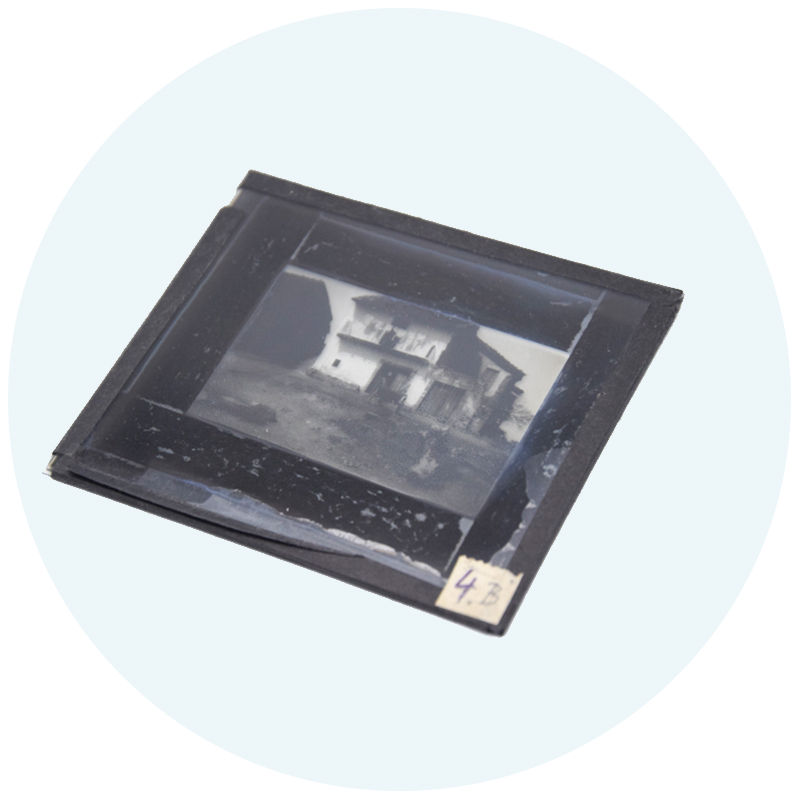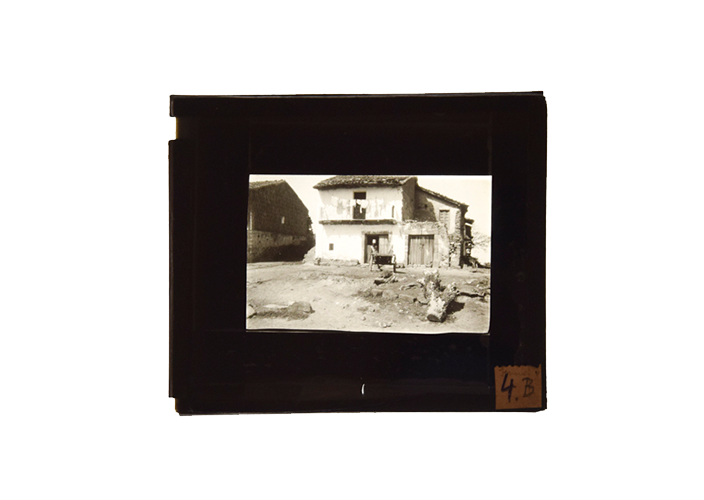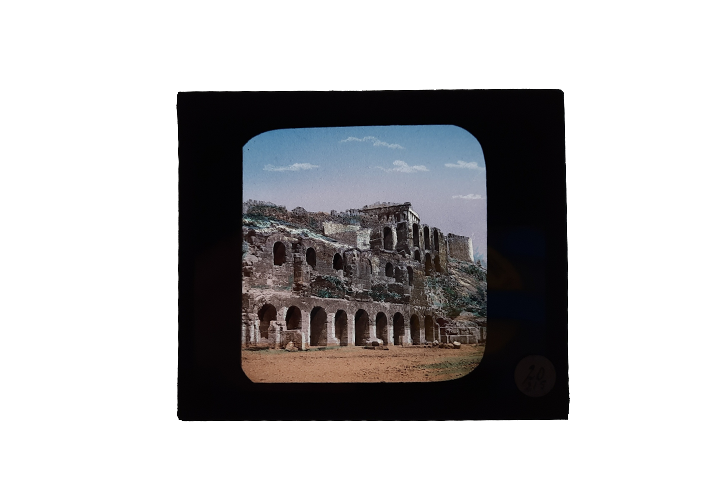Read more
![]()
Lantern slides
The first glass slides were projected using so-called ‘magic lanterns’ (a projector with a candle or oil lamp inside), which is why they are often called lantern slides. These predecessors to slides on transparent film were frequently projected on large screens, for example in lectures at schools or universities, from the 17th century until the 1940s. The first lantern slides were hand-painted, and are still sometimes found at flea markets today.
Take note of the order
Because of the context in which they were used, the order of glass plates is important in many collections.
Decay
Glass slides can commonly become damaged by mould, dirt, a detaching emulsion layer or silvering of the dark areas on the slide, and/or have broken, cracked or scratched glass. To safeguard against further decay or loss of glass plates, we recommend digitising them as soon as possible. Also, don’t store your glass slides in an environment that is too dry, humid or cold (and never below freezing).
Did you know …
… meemoo is busy working on a large-scale glass plate digitisation project? You can check it out here.
Read all about glass slides here:






